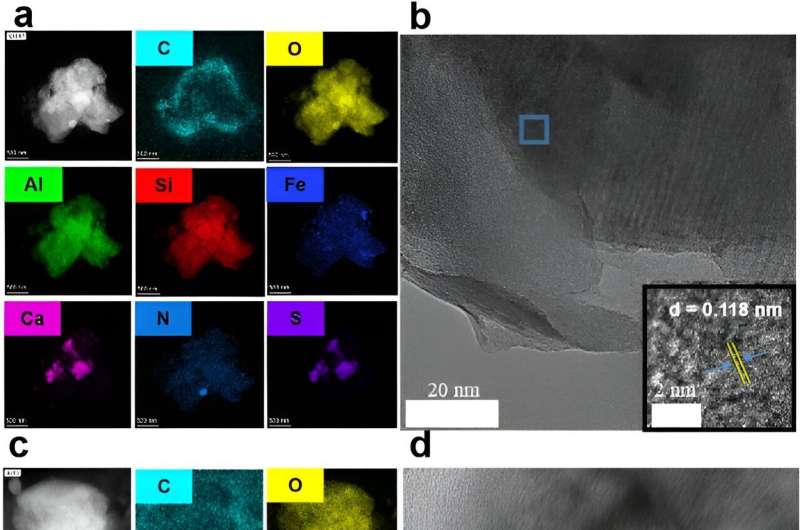This article has been reviewed according to Science X's editorial process and policies. Editors have highlighted the following attributes while ensuring the content's credibility:
fact-checked
proofread
Breaking boundaries: The unexpected routes of minerals in crop growth

Imagine plants not just sipping nutrients dissolved in water, but actually munching on tiny mineral particles straight from the soil. A study sheds light on how wheat and lettuce aren't just passive feeders—they actively grab, transport, and utilize solid minerals from their roots all the way to their shoots.
This discovery is not only surprising but also hints at new ways to boost crop growth and environmental health, paving the way for smarter farming techniques.
Plants traditionally acquire nutrients in dissolved forms, but the uptake of solid mineral particles has been largely unexplored. Current agricultural practices and environmental assessments may overlook the potential of plants to directly utilize these particles.
This study's insights into the direct uptake routes provide a crucial understanding of how plants interact with their soil environment, potentially altering how we manage crop nutrition and soil health. Based on these challenges, there is a pressing need to delve deeper into this phenomenon.
Conducted by researchers at the State Key Laboratory of Soil and Sustainable Agriculture, the study, published in Eco-Environment & Health, investigates how wheat and lettuce plants absorb and transport kaolin particles. Employing covalent labeling and advanced microscopy techniques, the researchers tracked the particles' movement, offering groundbreaking insights into the plants' ability to engage with their non-soluble mineral environment.
The researchers used hydroponic and soil systems to investigate how wheat and lettuce plants internalize and transport kaolin particles. Through advanced techniques such as fluorescent dyes and lanthanum labeling, the study revealed that these mineral particles are taken up at lateral root emergence sites, bypassing the protective Casparian strip.
This unexpected pathway suggests a direct mechanism for mineral intake, previously undocumented in plant science. While wheat showed a higher uptake rate in hydroponics, significant translocation of particles to shoots was observed in both species when grown in soil.
These findings suggest that soil interactions may enhance the ability of plants to utilize solid minerals, challenging traditional views on plant nutrition and suggesting new avenues for agricultural optimization.
Dr. Yongming Luo, the study's senior researcher, stated, "Our findings challenge long-held assumptions about plant–mineral interactions. The ability of crops to directly utilize solid minerals could lead to innovative strategies for biofortification and enhanced phytoremediation capabilities, offering significant benefits for sustainable agriculture and environmental management."
This study opens new possibilities for agricultural practices, potentially leading to the development of crop varieties optimized for direct mineral uptake, enhancing growth efficiency and environmental resilience. Furthermore, understanding these pathways could revolutionize our approach to soil management, tailoring strategies that leverage natural plant capabilities to improve nutrient cycles and reduce reliance on chemical fertilizers.
More information: Jie Yang et al, Crop plants transport irregularly shaped mineral particles from root to shoot: Tracking and quantifying, Eco-Environment & Health (2024). DOI: 10.1016/j.eehl.2024.05.002
Provided by State Key Laboratory of Soil and Sustainable Agriculture





















